Are you pouring your curiosity down the drain? You've come to the right place! Welcome to our comprehensive guide on the inner workings of one of the essential household items - the toilet.
As homeowners or prospective buyers, we should all take the time to understand how these marvelous contraptions work so we can effectively maintain and care for them. Let's dive in and flush out the details on this seemingly simple yet remarkably complex device.
The Basic Anatomy of Your Toilet
First and foremost, it's important to identify the primary components that make up your toilet. These components include:
The bowl is where the waste ends after you use the toilet, whereas the tank houses the water that flushes the waste away. The seat is where you sit (or stand next to) during the event.
There are also a few essential parts housed inside the tank. These parts include:
- Float
- Flush valve
- Fill valve
Now, on to the nitty-gritty details!
Your Toilet’s Flushing Mechanism
When you press the flush handle or button, a chain connects it to the flapper, which lifts and releases the water from the tank. The water rushes through the flush valve and into the bowl, creating a powerful force pushing the waste into the pipe leading to your home's sewer or septic system.
A siphon effect then occurs, emptying the bowl, and the flapper closes again, sealing the tank.
Your Toilet’s Refilling Process
Once the flush is complete and the bowl is empty, the tank must refill with water for the next use. The fill valve is responsible for this process.
As the water level in the tank drops, so does the float connected to the fill valve. This opens the fill valve, admitting water back into the tank. As the water level rises, so does the float, eventually shutting off the fill valve when the tank is full.
Overflow Protection For Your Toilet
An overflow tube is built into the system to prevent flooding in case of a malfunction or overfilling. If the water level in the tank becomes too high, the overflow tube redirects the excess water back into the bowl. This ensures your bathroom remains dry and damage-free.
How to Maintain Your Toilet
Proper toilet maintenance is crucial for its longevity and functionality. Regularly inspect the components inside the tank, such as the flapper, fill valve, and the chain connecting the handle to the flapper. These parts wear down over time and may need replacement.
Additionally, clean your toilet regularly using a brush and mild detergent to prevent the buildup of residue, which can affect the efficiency of the flush.
Finally, take note of any leaks, as they may indicate a faulty seal, which should be replaced to avoid damage to your bathroom floor.
Your Toilet Experts!
The intricacies of the toilet might not be a conversation starter, but understanding how your toilet works and its essential components are invaluable for any homeowner or house hunter. With this knowledge, you will be better prepared to maintain and troubleshoot your plumbing throne, ensuring it serves you well for years.
If you have questions or concerns regarding your toilet or any other plumbing problem, contact our experts at Aztec Plumbing & Drains! Contact us online or give us a call. (239) 932-2959
Learn More in Our Toilet Series:
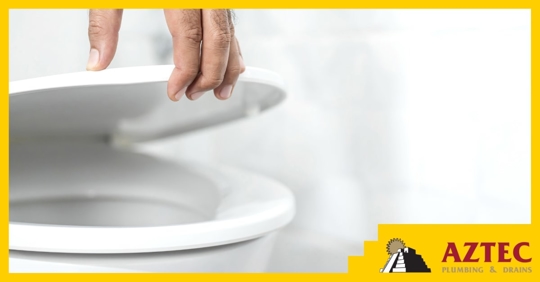
Will An Animal Pop Out of My Toilet?
Do you worry about animals crawling out of your toilet? It's a common fear, but one that is largely unfounded. This blog post will discuss the reality of animal-toilet interactions and dispel some of the myths surrounding them.
We'll also explore which animals are most likely to appear in your toilet and how often it actually happens. So read on to learn more and put your mind at ease!
Should You Be Afraid of Toilet-Dwelling Animals?
It's understandable to be worried about animals in your bathroom. After all, the toilet is one of the most intimate places in our homes. But there's no need to fret - animal-toilet interactions are actually quite rare. In fact, they only happen a few times each year worldwide.
There are a few reasons for this. First, toilets are usually located inside of our homes, which animals are hesitant to enter. Second, toilets typically contain water, and most animals are not good swimmers. Finally, toilets flush - meaning that any animal that does end up in one is quickly flushed away before they have a chance to escape.
Where Does The Myth Originate?
So if animal-toilet interactions are so rare, why do we worry about them? Part of it has to do with the media. Every time there's a story about a snake or rodent being found in a toilet, it makes headlines. These stories are usually sensationalized and play on our fear of the unknown.
As a result, we often overestimate the likelihood of animal-toilet interactions and think they happen more often than they actually do.
What Animals Are Most Likely to Crawl Out of Your Toilet?
There are a few animals that are known for crawling out of toilets, but the most common ones are snakes, frogs, and rodents. Of these, snakes are by far the most likely to appear. This is because they're good swimmers and often end up in toilets after entering homes through the sewer system.
Frogs are also common toilet-dwellers, but they typically only enter homes by mistake. Once they're in, they have a hard time getting out again. Rodents are the least likely of the three to appear in toilets, but it can still happen on occasion.
For Toilet Troubles, Trust our Team
If you're worried about animals crawling out of your toilet, don't be! The chances of this happening are very slim. Should you need any help with your plumbing, the Aztec Plumbing & Drains team is always here to help. Give us a call today at (239) 932-2959!
Learn More in Our Toilet Series:
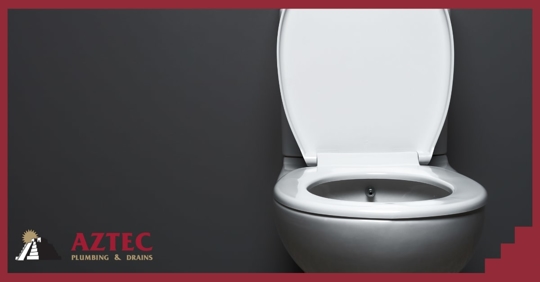
How Long Do Toilets Last?
Toilets are built to last. They are one of the most-used items in the home and take up a large chunk of your water bill, but despite all that use, toilets can last 50 years or more. That’s way longer than any appliance and most shingle roofs!
This isn’t to say that you can just forget about taking care of your toilet for 50 years. But how long can you reasonably expect your toilet to last? There are many factors that determine the lifespan of a toilet.
Water Efficiency
The biggest difference between older and newer toilets is water efficiency. The Environmental Protection Agency set the standard for toilets to use only 1.6 gallons of water per flush. And the newest models are able to use only 1.28 gallons per flush, a significant improvement.
If your toilet isn’t up to these standards, you may want to consider an upgrade. You can save a significant amount of money by upgrading to a water-efficient toilet.
Constant Repairs
As with most things, if you’re making constant repairs to your toilet, it may be more sensible to upgrade to a new unit. Mechanical issues may indicate your toilet isn’t as efficient as it could be, so you’ll be spending more than is necessary.
Consult with your plumber to see if they think it’s time for a new toilet.
Cracks
If there are cracks in your toilet, you’ll need to get it replaced. Cracks lead to leaks, which not only wastes water but can damage your floor and be a safety hazard. If you notice leaking around your toilet, contact a plumber immediately.
Your Toilet Issues, Solved
When you have a problem with your toilet, contact the experts at Aztec Plumbing & Drains. Our team is standing by, ready to help with any plumbing problems you may experience. Call us today at (239) 932-2959.
Learn More in Our Toilet Series:
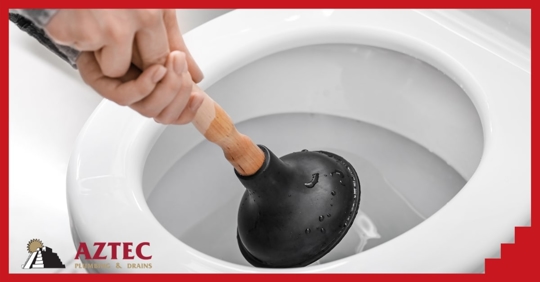
How to Plunge Correctly
If you’re like us, you say a small prayer after pressing the toilet handle that the water wooshes away like it’s supposed to. But for the occasional time the action stops, it can be deflating.
You probably grab the plunger and start going to town, hoping nothing splashes back at you. But believe it or not, there is a right and wrong way to fix your toilet with a toilet plunge.
You’re Probably Using the Wrong Plunger
We all know the standard toilet plunger. If you asked for one, pretty much anyone would bring back the same thing: a round, burnt-orange-colored rubber cone attached to a wooden stick. It’s a common misconception that these are used for toilets when they are actually better suited for sinks.
When plunging, it’s essential to create a seal around the drain. A plunger uses suction to dislodge any clogs deeper in the pipe. Without a proper seal, it’s the equivalent of trying to put out a fire by blowing on it.
Opt for a plunger with a round protrusion on the bottom. This little extra piece will insert into the drain, allowing the main plunger to create a seal.
Don’t Work Harder than You Need To
It’s not hard to work up a sweat while plunging a blocked toilet. But there are ways to make the job easier.
For example, it’s unnecessary, but plugging up your sink and shower drains while plunging can help make the job easier. These drains are connected in the plumbing network, so reducing places where air can escape can help ensure your suction is solid.
It may seem hopeless sometimes, but following these tips will give you the best chance at busting that blockage.
Prompt, Polite, & Professional Plumbers
Aztec Plumbing & Drains is here to help you through toilet troubles and any other plumbing issues. Call us today at (239) 932-2959 or visit our website to schedule an appointment.
Learn More in Our Toilet Series:
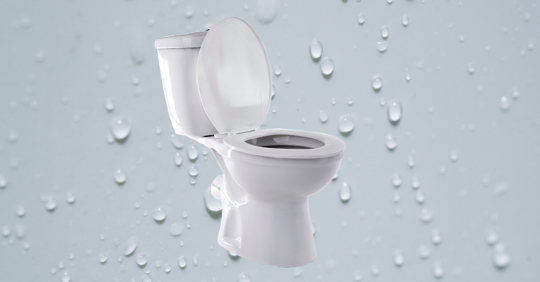
Does your toilet always look like it just finished an intense CrossFit session?
When a toilet sweats, it’s because the temperature in your bathroom is warmer than the cool water in the tank. The difference in temperatures produces condensation on the tank’s surface, kind of like how a tall glass of iced tea perspires on a hot day.
As far as toilet problems go, a sweating toilet isn’t the worst thing that you can experience (the backflow earns that distinction), but it’s something that can cause issues down the line if left untreated.
In our legendarily humid climate, you’ll want to control condensation where you can because when water is constantly dripping on your floor, your home will suffer major damage eventually. A sweating toilet can lead to:
- Mildew
- Stained baseboards
- Rotted subfloor
- Discolored wall paint
- Soggy drywall
Condensation can even rust off the bolts holding the toilet to the floor, which could make your next sitdown a risky proposition.
Fortunately, there are some easy steps you can take to control your potty’s perspiration problem.
Insulate the Tank
An insulation kit for your toilet tank is a simple fix. The kit is comprised of a sheet of foam with an adhesively backing.
- First, drain the tank by shutting off the water supply valve and flushing it
- Next, cut the foam down to the tank’s height
- Peel off the sheet to expose the adhesive
- Apply to the inside of the tank
This should create an effective barrier between the water in the tank and the surrounding air.
Install an Anti-Sweat Valve
An anti-sweat valve connects to your supply line to ad warm water into the tank, raising the temperature so that it’s closer to that of the air outside. Installation can be complicated, requiring you to splice the copper T-fitting into the line. Unless you’re handy with tools and consider yourself a capable DIYer, this job is best left to the pros.
Ditch the Tank
If all else fails, consider upgrading your conventional commode to a tankless model. Not only does it solve the pesky sweating problem, but the tankless throne will also free up floor space. Bonus: toilets without tanks can be mounted to the wall at any height for more custom comfort.
Bottom line: A toilet sweating like a nervous teenager needs to be remedied right away. If you run into any complications with the abovementioned steps, contact Aztec Plumbing & Drains at (239) 932-2959.
Learn More in Our Toilet Series:
You rely on your toilet to be there for you, ready to go when nature calls, right? Well, what happens if one day you head into the bathroom to relieve yourself only to realize your toilet is no longer working properly? Whether it’s not flushing at all, or a stream of water runs down the bowl and onto the floor as you push down on the lever, you can quickly find yourself in the middle of a giant problem.
Toilets are not something that homeowners often think of, especially when it comes to maintenance. But if you’re oblivious to what’s going on and simply ignore any of the following warning signs, you could be in for that rude awakening we mentioned above. So, keep a close eye out for these three common signs that it’s time to upgrade your toilet:
1 - Your Toilet Clogs Frequently
A clogged toilet is inevitable every now and then, but if it seems to be clogging multiple times per week, or even more frequently than that, something is seriously wrong.
Some of the older toilets out there require multiple flushes to get everything down and these models tend to face frequent stoppages at random.
Your toilet shouldn’t be that much of a nuisance and for this reason, it’s probably a good idea to consider upgrading. Best of all? You don’t even have to sacrifice water savings with a newer model because most options out there today do in fact, save water with each flush.
Not sure which type of toilet is best for your home? Our friendly, knowledgeable experts will be more than happy to discuss options and help you come to a conclusion.
2 - There’s A Crack In The Porcelain
Over time, toilets can develop “hairline” cracks in the tank or in the bowl. Generally speaking, these cracks won’t leak water right away, but as they continue to wear away, that small crack can turn into a flood of water in the bathroom.
It’s best to take a quick look at the tank and the bowl each time you use the lavatory and if you notice anything that looks like a crack, consider replacing the toilet before things get worse.
3 - Visual Scratches/Dirt
Similar to what we mentioned above, surface scratches can become a reason for concern. Initially, they may not hinder the toilet’s performance, but as they continue to wear over time, scratches can make it very difficult to keep the bowl clean and can lead to other issues.
The same goes for worn out surfaces on older toilets. You may find yourself scrubbing and cleaning them quite frequently, and let’s face it — who has all that extra time to spend cleaning a toilet?
It might be worth your while to look into buying a new toilet so you can forget about all of that extra weekly maintenance that goes into keeping it clean.
When you install a new plumbing fixture in your home, you’ll enjoy both the comfort of a modern amenity, and the benefits in water and energy efficiency it can offer. We handle everything from the simplest things like faucets and shower heads to the most complex and difficult installations like tankless water heater upgrades. And we do all of it with the confidence and skill that comes from years of experience and hours of rigorous training.
When you choose one of the professionals at Aztec Plumbing & Drains to handle your installation service, you can trust that we’re going to handle it with ease. We can even handle the most important jobs as well, including things like pressure regulator valves, water lines, sewer and drain lines, and so much more. We take creative and modern approaches to your new plumbing installation needs so you can rest easy and know that everything is done right and up to the latest safety standards. Call us today at (239) 932-2959.
Learn More in Our Toilet Series:
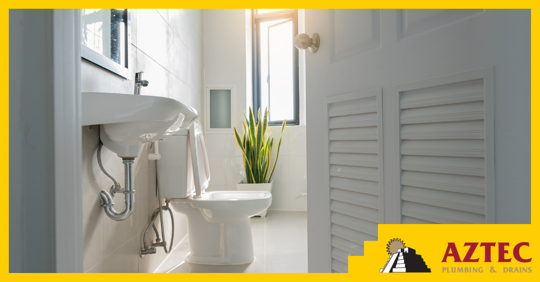
Why Does My Toilet Keep Running?
There's nothing more frustrating than a toilet that won't stop running. Not only can it waste a surprising amount of water, it can also significantly drive up your water bill. Did you know that if you hear your toilet keep running, it’s most likely the sound of water filling the tank? We’ll discuss some potential problems that could be causing your toilet to not stop running.
How To Fix a Toilet That Keeps Running
If your toilet runs non-stop, whether you’ve recently flushed or not, you might have one of the following problems:
Your toilet flapper is a round, rubber seal that releases water into the bowl when you flush. The connected chain lifts the flapper up when the toilet handle is pressed down, allowing water to pour into the toilet bowl.
But that flapper can deteriorate over time, preventing it from creating a perfect seal. This results in a slow water leak from the toilet tank, forcing your toilet fill tube to slowly and constantly fill the toilet tank.
If your flapper is not sealing or looks broken, it’s time to replace it.
-
2. A Flapper Chain That’s Too Tight
Your flapper is connected to the handle on your toilet by a chain. But if that chain is too tight, the flapper can’t close completely. This also causes a slow leak and forces your fill tube to refill the toilet tank constantly.
Make sure there is enough slack in the chain to allow the flapper to completely seal the small hole in the bottom of your toilet tank. If the chain is too tight, you can adjust it by removing the pin from the chain and placing it a couple of rungs lower on the chain.
-
3. The Water Level in the Toilet Tank is Too High
The fill tube is responsible for refilling the tank with water after every flush. This tube is connected to your main water supply. As the water level in the tank rises, a float lifts and eventually shuts off the water. Your float can be adjusted to shut off water flow at different levels.
If your float is too high, water will constantly drain into the overflow tube, which can make it sound like your toilet is constantly running.
Take the lid off the toilet tank and watch the overflow tube. If water flows up into the tube after a flush, lower the float until the problem is resolved.
-
4. The Fill Valve Isn’t Working Properly
The fill valve is responsible for supplying water to the tank. If it's leaking or not otherwise functioning properly, water will continue to run. Problems with the fill valve can be caused by a number of factors, including a leak in the valve or a build-up of sediment.
In most cases, the problem can be resolved by simply replacing the fill valve. However, if the leak is severe, it may be necessary to replace the entire toilet. Either way, it is important to identify and fix the problem as soon as possible to avoid wasting water and increasing your water bill. If you're not sure how to fix the valve yourself, you can always call on our plumbing service for assistance.
Call Us for a Toilet that Keeps Running!
If you still need help fixing a toilet that keeps running, contact the Aztec Plumbing & Drains team today at (239) 932-2959. We’ll send over a plumber and get your toilet back to normal operation in no time.
Learn More in Our Toilet Series:









